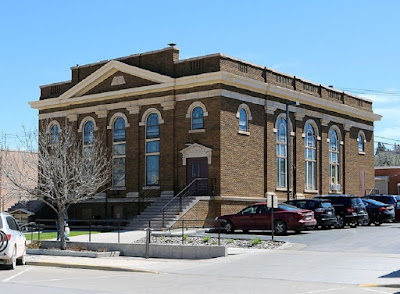laghi glaciali praterie pionieri nativi americani e architettura nel centro del Vecchio West
Il Sud Dakota e’ composto
da quattro regioni: I laghi glaciali e le praterie nel Nordest, il Sudest, i
grandi laghi e le Badlands ad Ovest del fiume Missouri.
Aberdeen e’ la principale
cittadina del Nordest. Abitata dai Sioux prima dell’arrivo degli Europei verso
il 1820. Come tanti altri centri del Midwest, Aberdeen e’ stata sviluppata
intorno alle ferrovie costruite dopo la Guerra Civile; le abitazioni e gli edifici pubblici presentano una combinazione
di architettura moderna e classica.
Fort Sisseton
Historic State Park Rievoca le Tradizioni dei Nativi Americani Pionieri e la
Cavalleria USA
Nicollet Tower, una struttura alta 75 piedi che porta il nome dell’
esploratore francese Joseph Nicollet che visito’ questo territorio nel 1839, offer
un panorama mozzafiato che copre tre stati.
Watertown, la citta’ dei
laghi, e’ anche rinomata per lo Zoo Bramble Park ed il centro per le
arti Terry Redin, ritenuto tra gli artisti piu’ popolari degli Stati Uniti.
Brookings e’ un piccolo
centro universitario con diversi musei tra cui un Museo d’Arte, il Museo dei
Bambini ed il Museo delle Tradizioni Agricole I Giardini McCrory sono
considerati tra I 10 migliori giardini botanici del paese 10 small botanical
gardens in the United States. South Dakota State University e’ un centro per la
ricerca dell’ agricoltura e la produzione sul campus di ottimi gelati e
formaggi. both made at the university.
De Smet e’ famosa per Little
House on the Prairie, il libro di avventura dei pionieri di Laura Ingalls Wilder.
Potrai visitare Ingalls Homestead e diversi altri luoghi resi famosi da
questa rinomata autrice.
Visita il Sud Dakota con Knowledge Tourism
Sioux Falls e’
la Principale Citta’ del Sud Dakota
Il Museo Nazionale della Musica,
con sede nella cittadina di Vermillion, contiene oltre 13.500 strumenti
musicali rari mentre il Museo W.H. Over Museum specializza nella storia
naturale e culturale di questo stato.
Yankton e’ stata la prima
capitale del Territorio del Dakota. Gli esploratori Lewis e Clark furono trai I
primi a visitare il territorio. Oggi, l’omonimo lago offre molteplici attivita’
recreative all’aperto. Da visitare: il Museo Territoriale del Dakota e diverse
abitazioni private con notevoli pregi architettonici.
Il Centro
Culturale e Museo Akta Lakota Chamberlain-Oacoma
Il Buffalo Interpretive Center
una esperienza formativa sulla storia del buffalo e l’effetto sulla cultura
delle tribu’ native americane mentre Badlands National Park copre 97,600
ettari.
Nel 1743 a Fort
Pierre il Territorio del Sud Dakota fu dichiarato parte della Francia
Rapid City e’ centralmente ubicata per visitare le Black Hills, Mount
Rushmore, il Memoriale a Crazy Horse, il Museo Indiano del Nord America, Custer
State Park e le Badlands.
La citta’ contiene due distretti storici;
al centro, potrai visitare palazzi come la First National Bank, risalente al
1914, mentre il distretto residenziale nella parte Ovest di Rapid City presenta
esempi di architettura del XIX ed I primi del XX secolo nell’arco di 18 isolati.
Da non perdere, diversi piccolo comuni ricchi di storia, tra cui:
Keystone, un borgo di
montagna con delle miniere d’oro dismesse;
Hill City e' raggiungibile
con un treno storico che risale al 1880 per ammirare le opera di
artisti del luogo e degustare i vini particolari della Cantina Prairie
Berry;
Deadwood e’ la piu’ rinomata delle cittadine del Vecchio
West. Al cimitero di Mount Moriah riposano Wild Bill Hickok e Calamity
Jane. Deadwood continua la sua fama di spregiudicatezza con i suoi ben 80
casino’ ma offre anche importanti attivita’ recreative all’aperto come la
Mikelson Trail, un percorso per bici e passeggio lungo oltre 109 miglia, che
attraversa le mitiche Black Hills.















